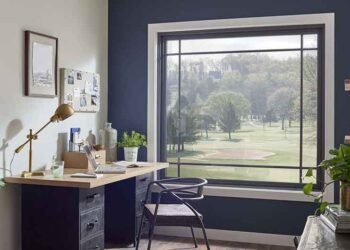Cabinet design is a specialized field in interior design and woodworking. Cabinet designers are responsible for assembling customized storage solutions that are functional and aesthetically pleasing, says Brentwood Square Inc. Individuals must possess unique skills, education, and experience to excel in this profession. We will explore what it takes to become a successful cabinet designer, including the paramount skills, educational pathways, and potential career opportunities in this creative and rewarding field.
Skills needed for a cabinet designer
1. A Passion for Design
A genuine passion for design is the foundation upon which a career in cabinet design is built. Cabinet designers should have a deep appreciation for aesthetics, an eye for detail, and a love for creating beautiful and functional spaces. This passion drives their commitment to creating innovative and customized storage solutions that fulfill their client’s unique needs and preferences.
Successful cabinet designers often discover inspiration in diverse design styles, architectural elements, and the latest trends in interior design. They constantly seek opportunities to refine their design sensibilities and stay updated on emerging design concepts and materials.
2. Creative Problem-Solving Skills
Cabinet design is inherently problem-solving-oriented. Cabinet designers are tasked with creating storage solutions that maximize space, enhance functionality, and address specific client requirements. To excel in this field, individuals need creative solid problem-solving skills. Cabinet designers must be able to assess a space, identify its limitations, and devise innovative solutions that optimize storage and organization.
This often involves designing custom cabinets, shelving, and storage units that fit seamlessly within the available space while maintaining an aesthetically pleasing and cohesive design. Creative thinking and the ability to envision how different elements come together are crucial for cabinet designers to overcome design challenges and create unique and practical storage solutions.
3. Technical Proficiency
Cabinet designers need to be proficient in diverse technical elements of their craft. This includes a solid acquaintance with woodworking techniques, joinery methods, and the properties of different materials commonly used in cabinetry, such as hardwoods, plywood, and laminates. Proficiency in computer-aided design (CAD) software is also essential for cabinet designers.
CAD allows them to create detailed design plans, 3D renderings, and accurate measurements, which are crucial for both design presentations and fabrication. A great example is SketchUp. This popular design software lets users create highly detailed 3D models with exact measurements. These features are essential for both visualizing designs clearly and making sure construction goes smoothly. Taking a course like Focused SketchUp can make you an expert in using the software for rendering SketchUp, enabling you to fully leverage its capabilities. Furthermore, cabinet designers must have a working knowledge of manufacturing processes and collaborate with cabinetmakers or manufacturers to bring their designs to life. Comprehending how cabinets are constructed and assembled ensures that their plans can be executed effectively and efficiently.
4. Strong Communication and Client Interaction
Effective communication is a vital skill for cabinet designers. They must be able to listen carefully to clients’ needs and preferences, ask clarifying questions, and translate clients’ ideas into functional and aesthetically pleasing designs. Cabinet designers should also possess strong interpersonal skills to establish client rapport and trust.
Building a positive client-designer relationship fosters collaboration and ensures the final design aligns with the client’s vision. Clear and concise communication extends to presenting design concepts and plans to clients, contractors, and manufacturers. Cabinet designers must be adept at conveying their ideas through sketches, drawings, and presentations, making it easy for stakeholders to understand and approve the proposed designs.
5. Knowledge of Design Principles
Cabinet designers need a solid foundation in design principles, including color theory, spatial relationships, balance, and proportion. These principles inform their decisions regarding color palettes, material selection, and the arrangement of cabinet elements within a space. Comprehending the principles of ergonomics is also essential for cabinet designers.
They must consider the comfort and convenience of end-users when designing cabinets, ensuring that items are easily accessible and that the overall layout promotes efficiency and functionality. Additionally, knowledge of architectural and interior design styles is valuable. Familiarity with various design aesthetics, from traditional to modern, allows cabinet designers to tailor their creations to match the existing design of a room or to create a cohesive design concept.
6. Education and Training
While there is no strict educational path to becoming a cabinet designer, formal education and training can significantly enhance one’s skills and career prospects. Many cabinet designers hold degrees or certifications in interior design, architecture, or woodworking. Interior design programs, in particular, provide a solid foundation in design principles, CAD software proficiency, and exposure to various materials and construction methods. Some programs offer specialized coursework or concentrations in cabinetry and furniture design.
Woodworking programs or apprenticeships can also be valuable for cabinet designers, as they provide hands-on experience working with wood and understanding the intricacies of cabinet construction. These programs often teach woodworking techniques, joinery methods, and the safe use of woodworking tools including dust collectors. Ultimately, the level of formal education or training pursued by cabinet designers may vary, but ongoing professional development and staying updated on industry trends are essential for career growth.
Becoming a cabinet designer requires skills, education, and practical experience. A passion for design, technical proficiency, strong communication, and a solid understanding of design principles are key attributes of successful cabinet designers. While formal education and certification can enhance career prospects, building a portfolio and staying informed about industry trends is crucial for success in this creative and rewarding field. Cabinet designers have the opportunity to transform spaces and enhance functionality through their innovative and customized storage solutions. You should check out Gamma Cabinetry if you are looking for a professional.












